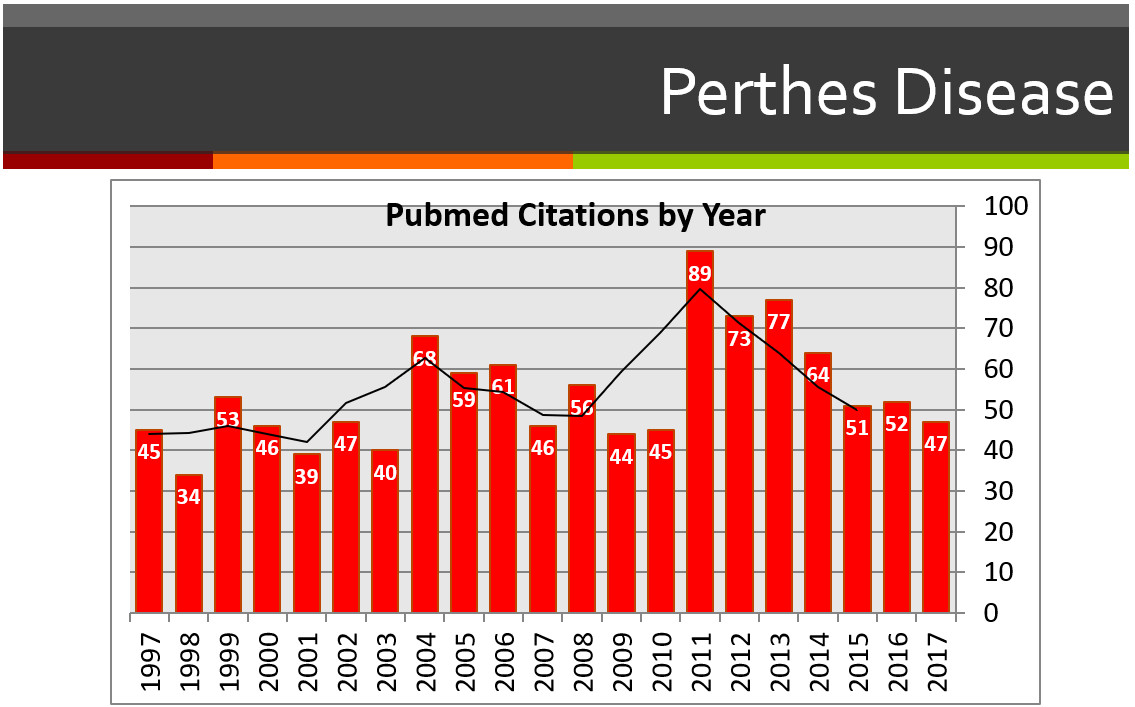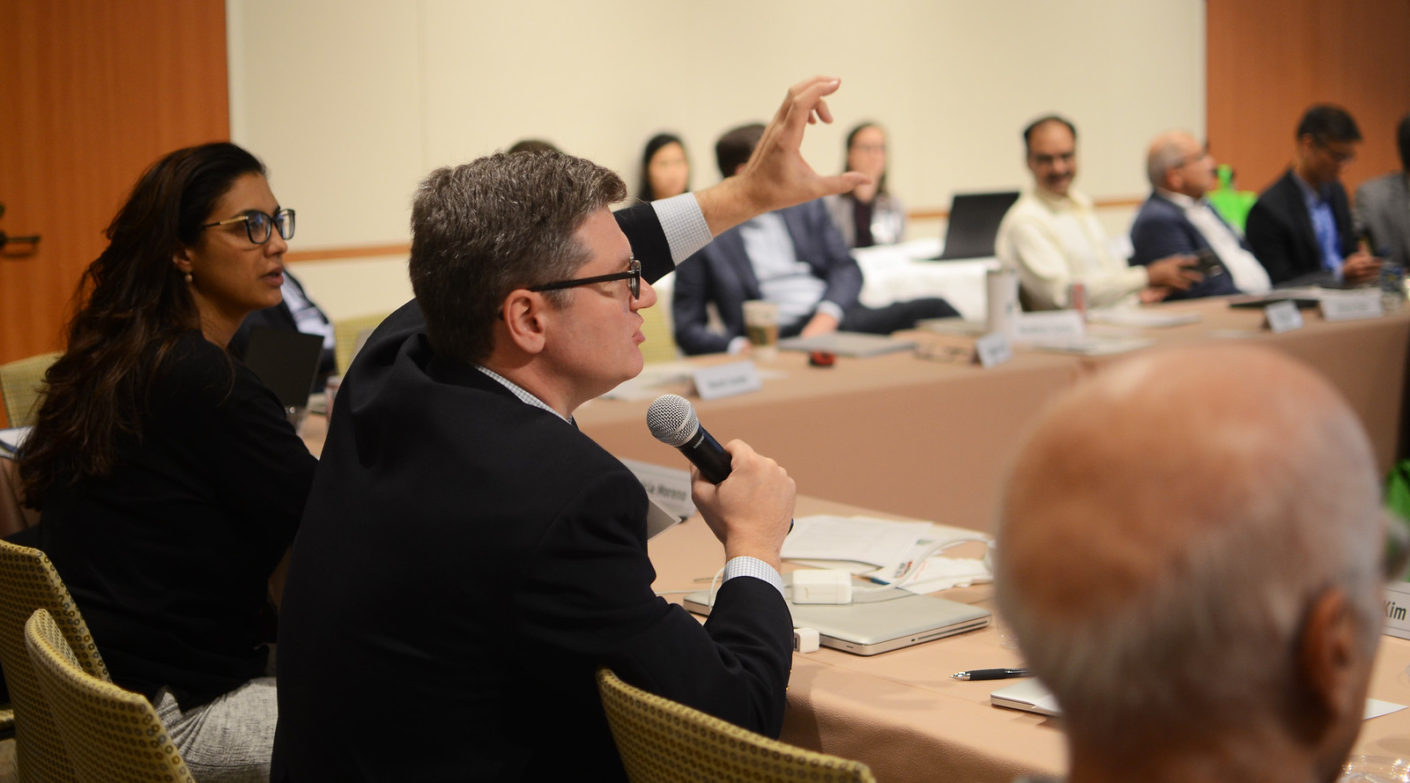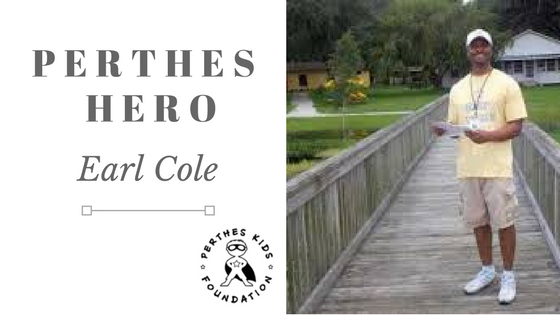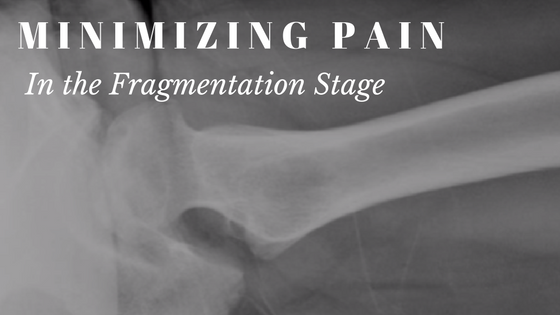Perthes research output
It takes significant effort to understand, treat, and cure a rare condition such as Perthes disease. As a medical community, we need to advocate for more research efforts, funding, and energy directed to Perthes disease. For 2017, only 47 research studies were published on Perthes disease, as opposed to 1174 studies published for anterior cruciate ligament injuries. As the IPSG, we are dedicated in improving the lives of children with Perthes through research, and appreciate any support this important cause. If you would like to contribute to help our current studies, please consider doing so at https://perthesdisease.org/donate/
IPSG 2018 Annual Meeting
We had a great annual IPSG meeting in Dallas a few weeks ago. Not only did we discuss the status of current research studies on Perthes, but we also had a chance to interface with leaders of the Legg Calve Perthes Foundation and Perthes Kids Foundation. We are continually inspired by the kids with Perthes – along with the dedication of parents, supporters, researchers, and doctors to improve the lives of Perthes patients through research.
IPSG Member, Dr. Mehlman: Learning More About Why There are Varied Treatment Options for Perthes
Variation in the treatment of Perthes disease can certainly be confusing if not maddening to parents seeking answers.Unfortunately it seems like we still have more questions than answers regarding this disease. Be that as it may, the question: “Why are there such varied treatments of Perthes disease among doctors?” is an immensely valid one. Treatment
A Glossary for Perthes Disease
Acetabulum: The socket part of the hip joint. Arthrogram: Anarthrogram is a radiology procedure in which special X-ray medicine is placed into the hip joint. This X-ray exam shows and evaluates the shape of the ball part of hip joint (femoral head). It also assesses whether the femoral head is covered (contained) by the socket
Perthes Heroes: Earl Cole
At what age were you diagnosed with Perthes? Age 7 What was your treatment plan? Non-weight bearing (no surgery), leg brace, leg casts, wheelchair, crutches, etc. How long were you inactive? Until the age of 13, so around 6 years of being inactive. Once you were healed, what was it like getting back into activities?
Tips on How to Deal with Pain During the Fragmentation Stage of Perthes Disease
Pain is one of the most common presenting complaints in early Legg-Calve-Perthes disease (along with limp). Pain typically is felt in the groin, side of the hip area, thigh, or even the knee. In the early stages of LCPD pain is typically caused by synovitis (inflammation of the joint lining), extra fluid in the joint,
IPSG on Facebook
[custom-facebook-feed carousel=”true”]
Video Archives
How do you choose between nonoperative and operative treatment for Perthes?
What is containment treatment for Perthes disease?
What are the limitations with Perthes and weight bearing?
Why are there such varied treatments of Perthes among doctors?
What are current studies being carried out by IPSG?
Are there any advancements in Perthes treatment?
How frequent are flare-ups in the fragmentation stage? How do you deal with them?
What does the future of Perthes look like?
Why did you join the IPSG?
What are we learning from IPSG?
What is the International Perthes Study Group?
IPSG Website Welcome
IPSG Community Live Stream
No Results Found
The page you requested could not be found. Try refining your search, or use the navigation above to locate the post.










 Subscribe to IPSG's Channel
Subscribe to IPSG's Channel